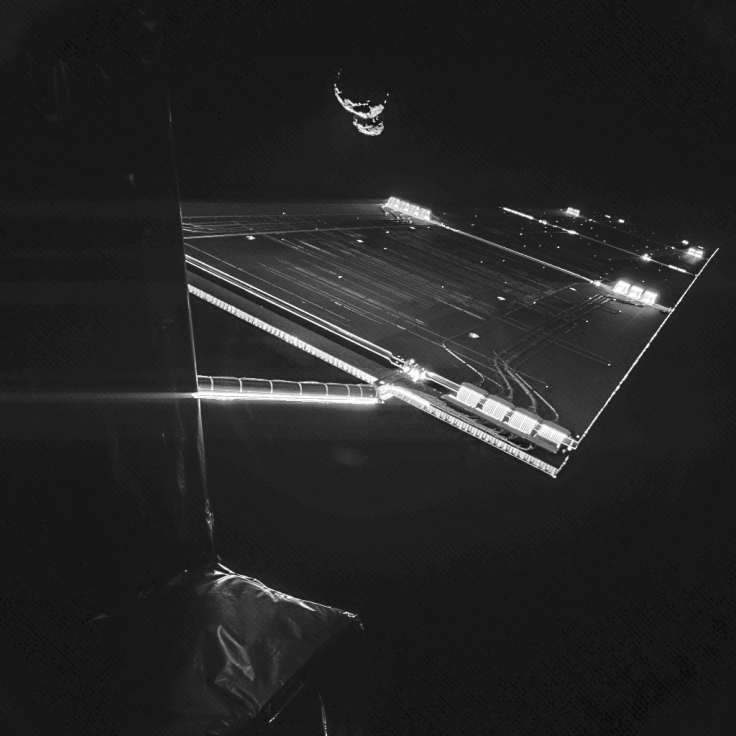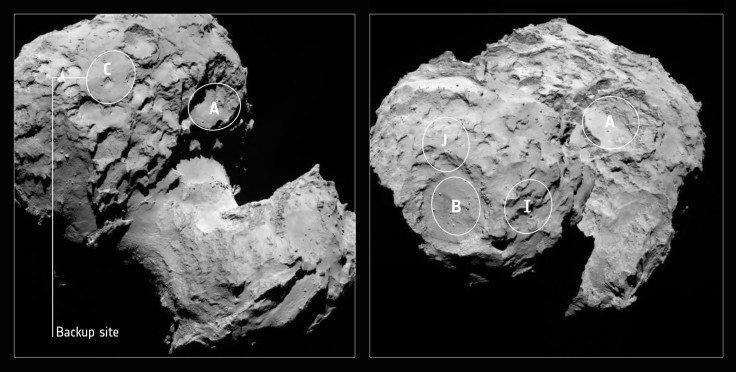Rosetta Comet Mission Finds A Landing Site: Philae Lander Will Call 'Site J' Home In November

The Rosetta spacecraft made a successful rendezvous with a comet in August, but the historic mission is far from over. The European Space Agency has selected "Site J" as the landing site for the Philae lander. Philae will land relatively close to it, depending on the speed and position of Rosetta to comet 67P/Churyumov-Gerasimenko.
Philae's landing site on comet 67P/Churyumov-Gerasimenko had to meet certain criteria. "Operationally we need to find a safe landing site, away from too much surface roughness, and have a site that has sufficient sunlight to ensure the lander can recharge itself. We also must consider having sufficient line of sight with the orbiter to transmit to Earth. In addition, we will consider the scientific aspects of the surface, determining which features are more interesting than others," said Matt Taylor, a Rosetta project scientist, in an interview with International Business Times.

By the end of August, ESA had identified five potential landing sites, three (B, I and J) located on the "head" of the comet and two (A and C) on the "body," or larger section, of the peanut-shaped comet. The space agency used images of the comet, taken by Rosetta, as well as measurements of surface temperature and environment prior to selecting a site.
Rosetta is the first spacecraft to orbit a comet and will travel with it as it completes its journey around the sun. While the spacecraft gathers vital information on the comet, the ESA is planning to place the Philae lander on the comet with a set of scientific instruments that will map the comet's surface, measure surface environment properties and probe the object's interior.
Finding the ideal site for Philae proved to be quite a difficult task, due to the dramatic surface variation seen on the comet, but Site J satisfied most of ESA's requirements. "Site J in particular offers us the chance to analyze pristine material, characterize the properties of the nucleus, and study the processes that drive its activity," said Jean-Pierre Bibring, a lead lander scientist and principal investigator of the CIVA instrument at the Institut d'Astrophysique Spatiale, IAS, in Orsay, France, in a statement. Site J is relatively flat with only a few boulders and Site C, with more sunlight time, was chosen as a backup.
Philae lander will touch down on the comet on Nov. 11 and ESA will perform a "Go for Launch" review on Oct. 14.
© Copyright IBTimes 2024. All rights reserved.












